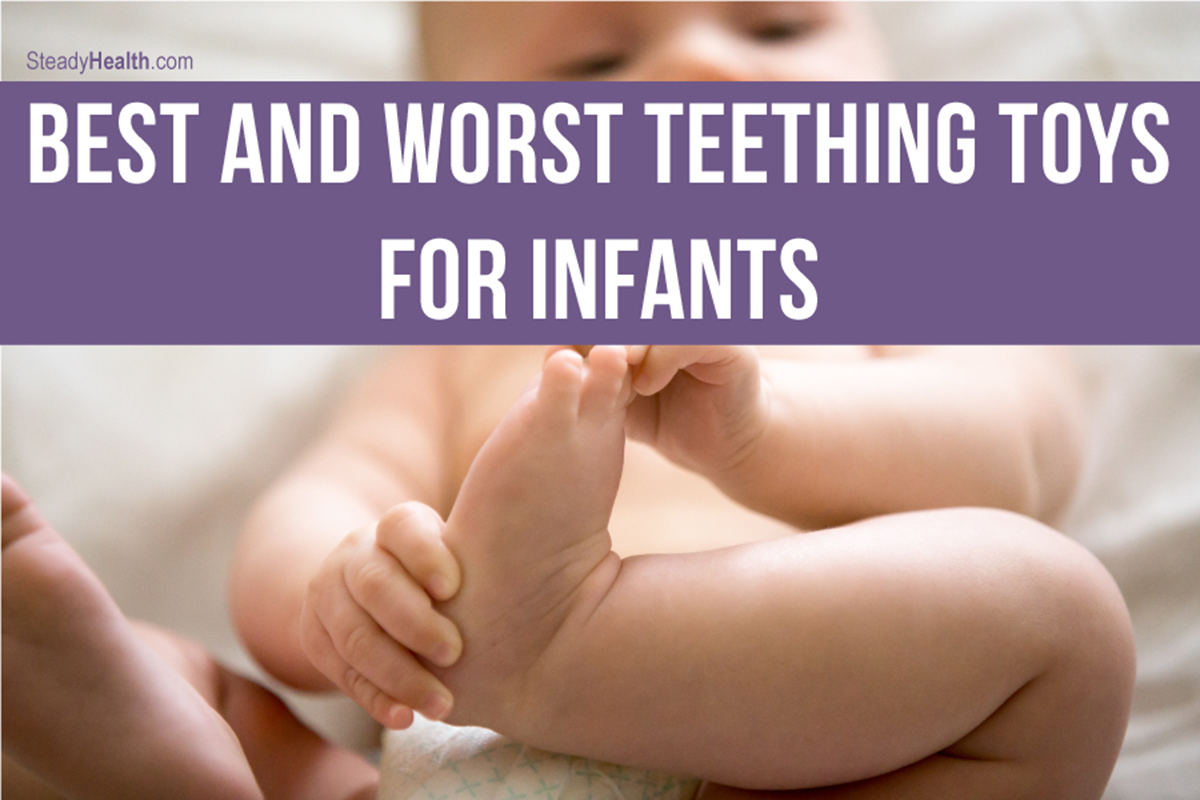When it comes to teething, it typically starts around six months of age. It can be stressful to watch your baby go through all the discomfort, but there are some things you can do to ease the teething pain, and the easiest way — after offering breast milk — is offering a good teething toy.
A baby will put anything in her mouth just to get some relief, including whatever comes at the reach of her hands. Teething toys come in a variety of shapes, sizes and materials. These toys are a great way to ease some of the discomfort, but not all teething toys are safe to use. Some teethers have dangerous chemicals in them that you do not want anywhere near your child, and many parents feel safer choosing natural and eco-friendly products.

Be careful which plastics
Researchers from the N.Y. State Department of Health's Wadsworth Center tested 59 baby teething toys and found that all of them contained bisphenol-A (BPA) and other endocrine-disrupting chemicals. Many chemicals, including the infamous BPA leaked into water during the experiment. [1]
A survey conducted by the Centers for Disease Control and Prevention found that almost 95% of American citizens have detectable levels of BPA in their bodies. [2] Even though these levels are found to be low, babies are a lot more sensitive, and it’s important to protect our infants from exposure to these substances. The best option is to choose natural materials, at least until dangerous chemicals are completely banned from the products for our youngest.
Be careful with all plastic teething toys regardless of declaration — even those that say BPA-free may still be dangerous. It is perhaps best to stay away from plastic teethers in general as all plastic is probably hormone disrupting, especially those soft plastic toys, as they are found to contain hazardous amounts of softening additives. [3, 4, 5]
Natural rubber
Rubber is the material those dangerous aforementioned soft plastic teethers are trying to emulate. It takes a lot of softeners or plasticizers (dangerous chemicals like phthalates) to make plastic act and feel as rubber. [7]
Teethers made with 100% natural rubber or caoutchouc — produced by coagulation of the latex — especially if they’re seamless, are among the safest you can find on the market. Unlike most other materials, natural rubber is minimally processes so you should be careful with handling it. Natural rubber can’t endure high temperatures (boiling or washing in a dishwasher), but because it is natural, it’s relatively easy to clean with warm water with vinegar or lemon.
Wood
Simple teethers made of maple tree are becoming more and more popular lately. If they’re made from 100% unpainted wood and sanded to the satin smooth, they represent a safe and useful toy for your little one. Natural wood is anti-allergic and non-toxic, so there’s no need to worry about your baby not being safe while dealing with teething discomfort.
Food-grade silicone
Medical-grade silicone is considered a non-toxic polymer mostly made from silica sand. It is believed that it can withstand heat and cold and — unlike plastics — won’t release dangerous chemicals, but recent studies have suggested that heating and freezing can cause it to leach. When it comes to baby products, they’re often boiled for sterilization purposes, and cooled for relief, so caution is needed.
While latex is natural and generally considered a healthier option than silicone, it can cause insensitivity and severe allergic reactions in some children. In cases like this, silicone appears to be a lot safer option. [8, 9]
If there are not enough studies on something, it doesn't mean it is (NOT) safe. Just remember that silicone might not be completely inert, and even though it’s considered relatively safe, much more research is needed. [10]
The bottom line
We all want best for our children, and would gladly use only organic products to relieve their teething pain, but it’s unfortunately not always possible. Regardless of the amount of research that I do, and how many times I offer it, my eleven-month-old daughter will still hate teething on wood, and will love her silicone dummy that I can’t seem to “lose”, no matter how hard I try.
And while some things are currently claimed to be safe, it is possible that what's considered safe now might not be considered safe tomorrow, as it happens all the time. Most of us haven’t heard of BPAs until couple of years ago, and now we all have glass food containers.
Even if you do have some items in your household that are not considered the safest, mindful and occasional use probably won’t hurt anyone. Try replacing bad products for the good ones whenever possible, but it’s also important to remain sane in the process!
- Infographic by SteadyHealth.com


Your thoughts on this